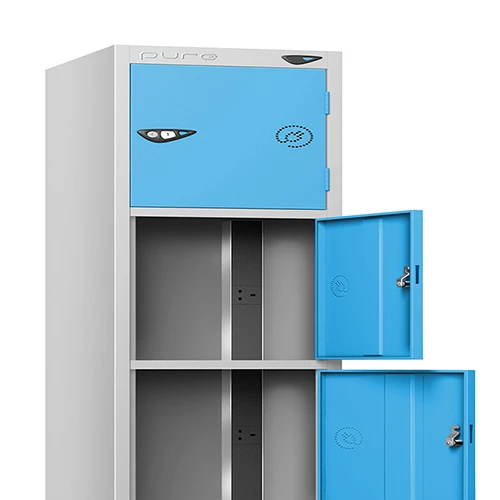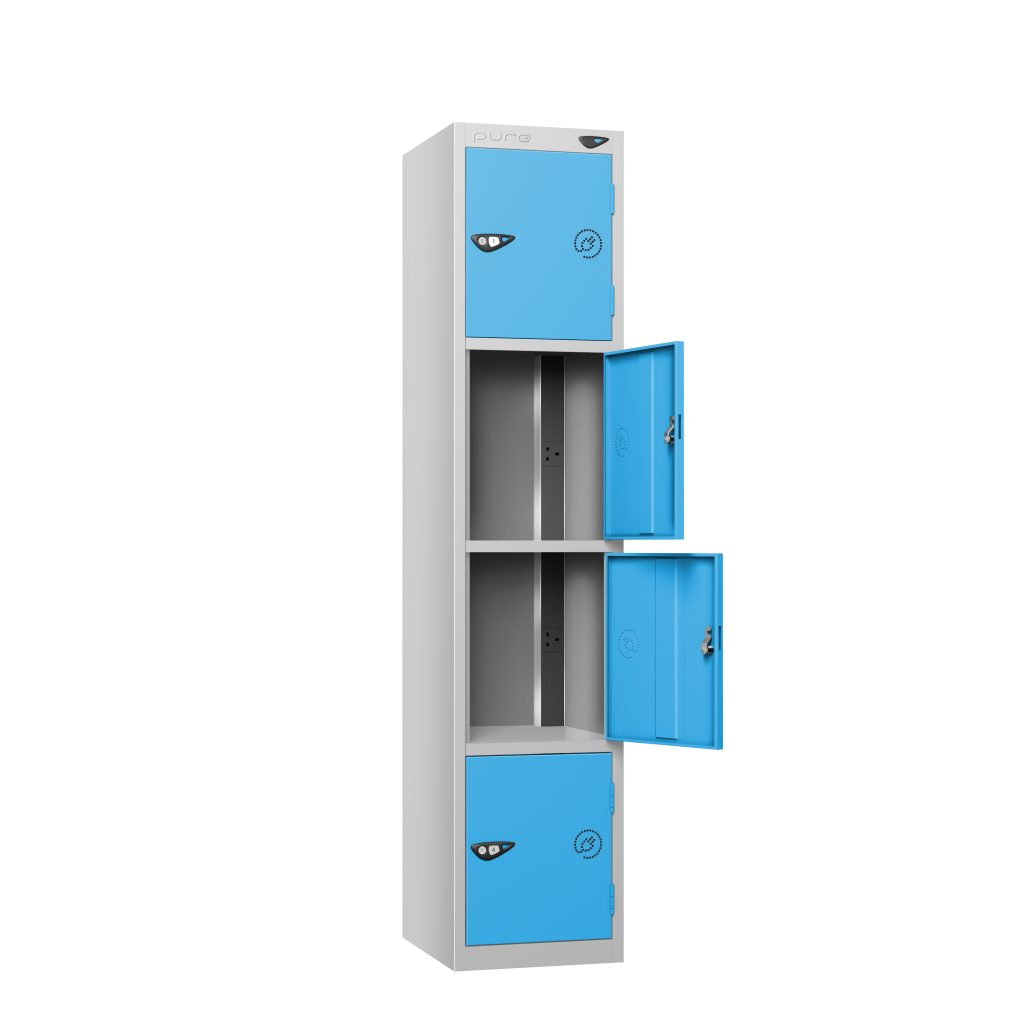Tool Charging Lockers: TFor Workplace Power Management
July 23, 2025

Tool Charging Lockers. Modern workplaces demand efficient power management solutions. Tool charging lockers have emerged as essential equipment across various industries. Furthermore, these innovative storage systems combine security with convenience. They provide a centralised charging solution for power tools and electronic devices.

Understanding Tool Charging Lockers
Tool charging lockers represent a revolutionary approach to equipment storage. Additionally, they solve the common problem of scattered charging cables and dead batteries. These secure cabinets feature individual compartments with integrated power outlets. Moreover, they ensure tools remain charged and ready for immediate use.
What Makes Tool Charging Lockers Essential
Construction sites, workshops, and offices face similar challenges daily. Workers struggle with flat batteries at crucial moments. Additionally, valuable tools often go missing or get damaged. Tool charging lockers address these issues simultaneously. They provide secure storage whilst maintaining optimal charge levels.
The basic concept centres on dedicated compartments with built-in electrical systems. Each compartment typically includes standard three-pin sockets or USB ports. Furthermore, advanced models incorporate smart charging technology with surge protection.
Types of Tool Charging Lockers Available
Standard Electric Models
Traditional electric tool charging lockers form the foundation of workplace power management. These units feature individual compartments with standard electrical outlets. Additionally, they accommodate various tool sizes and battery types. Most models include ventilation systems to prevent overheating.
The most popular configuration for charging battery drills and hand tool batteries is the 4-door locker, according to industry specialists. These units typically measure approximately 1800mm in height, 300mm in width, and 450mm in depth.
Smart Technology Variants
Advanced smart tool charging lockers incorporate cutting-edge technology. These systems monitor charging status automatically. Furthermore, they provide real-time updates on battery levels and usage patterns. Smart models often include app connectivity for remote monitoring.
Some variants offer predictive maintenance alerts. Additionally, they can schedule charging cycles to optimise battery lifespan. These features prove particularly valuable in high-usage environments.
Multi-Device Charging Systems
Versatile multi-device lockers accommodate diverse equipment types. They feature different socket configurations within single units. Additionally, these systems support simultaneous charging of tools, phones, and tablets. USB-C and wireless charging options extend compatibility further.
Heavy-Duty Industrial Models
Industrial-grade tool charging lockers withstand harsh working conditions. They feature reinforced steel construction and weatherproof sealing. Additionally, these units include enhanced security measures and larger compartment sizes. Heavy-duty models suit construction sites and outdoor applications perfectly.
Key Benefits of Implementing Tool Charging Lockers
Enhanced Productivity and Efficiency
Tool charging lockers eliminate downtime caused by flat batteries. Workers no longer waste time searching for available charging points. Additionally, centralised charging ensures tools remain ready throughout shifts. By providing a dedicated space for charging tools, these lockers eliminate the time wasted searching for chargers or waiting for batteries to recharge.
Project efficiency improves when teams can rely on fully charged equipment. Furthermore, organised storage reduces time spent locating specific tools. This systematic approach streamlines workflows significantly.
Superior Security Features
Theft protection represents a primary advantage of tool charging lockers. Expensive power tools become prime targets on construction sites. Additionally, secure compartments with robust locking mechanisms deter unauthorised access. Various lock options include mechanical combinations, electronic keypads, and RFID systems.
Power tools are expensive to replace and are often a target for thieves as they know they can sell them on for a good price. Charging lockers provide peace of mind for workers and employers alike.
Improved Workplace Safety
Organised charging areas reduce numerous safety hazards. Loose cables create tripping risks in busy environments. Additionally, improper charging practices can cause electrical incidents. Tool charging lockers contain all electrical activity within secure, ventilated compartments.
Having lots of power tools hanging around can present a real health and safety issue. Centralised charging systems eliminate these concerns effectively.
Extended Equipment Lifespan
Proper charging protocols extend tool and battery life significantly. Overcharging damages battery cells and reduces performance. Additionally, consistent charging cycles maintain optimal battery health. Tool charging lockers often include overcharge protection and smart charging algorithms.
Temperature management through ventilation systems prevents heat damage. Furthermore, secure storage protects tools from environmental factors and accidental damage.
Applications Across Different Industries
Construction and Building Sites
Construction environments benefit enormously from tool charging lockers. A powered tool locker is a great solution for construction and building sites to enhance productivity and ensure tool security. Workers can charge tools during breaks and overnight safely.
Mobile construction teams particularly value these solutions. Additionally, contractors working away from home avoid carrying tools to temporary accommodation. Overnight charging ensures maximum productivity the following day.
Manufacturing and Industrial Facilities
Manufacturing plants require constant tool availability for maintenance tasks. Tool charging lockers support production schedules by ensuring equipment readiness. Additionally, they provide organised storage in space-constrained environments.
Quality control teams benefit from always-charged inspection equipment. Furthermore, maintenance crews can rely on ready-to-use diagnostic tools.
Educational Institutions
Schools and universities increasingly adopt tool charging lockers for various purposes. Design and technology departments use them for student tools. Additionally, maintenance teams store groundskeeping and facility equipment securely.
IT departments utilise these systems for device management. Furthermore, they support BYOD (Bring Your Own Device) policies effectively.
Healthcare Facilities
Medical environments require reliable equipment charging solutions. Portable diagnostic devices need constant availability. Additionally, communication equipment must remain operational throughout shifts.
Tool lockers are an efficient solution for retail environments to store and charge handheld scanners. This principle applies equally to medical scanning equipment and monitors.
Office and Corporate Environments
Modern offices benefit from tool charging lockers for various applications. Employees can securely charge electronic devices or phones during the workday. Additionally, maintenance teams store facility management tools securely.
Hot-desking environments particularly value shared charging solutions. Furthermore, these systems support flexible working arrangements.
Important Limitations and Considerations
Electrical Capacity Constraints
Tool charging lockers have finite electrical capacity limitations. The limitations on what can be charged will depend on the electrical specifications of the locker and the device being charged. High-power tools may require dedicated circuits or upgraded electrical infrastructure.
Understanding power requirements prevents system overload. Additionally, proper electrical planning ensures safe operation.
Environmental Restrictions
Most tool charging lockers have environmental limitations. Due to the electronic components, they are not fully weatherproof and should be kept away from water or wet locations to prevent injury or electric shock. Outdoor applications require additional protective measures.
Extreme temperatures can affect charging efficiency and equipment lifespan. Furthermore, humidity levels must remain within acceptable ranges.
Installation and Maintenance Requirements
Professional installation ensures safe operation and compliance with electrical codes. Additionally, regular maintenance keeps systems functioning optimally. Regular cleaning and occasional electrical maintenance are advised to ensure that the locker functions safely and efficiently.
Dust accumulation affects ventilation effectiveness. Furthermore, electrical components require periodic inspection for wear and damage.
Cost Considerations
Initial investment costs vary significantly based on features and capacity. Additionally, ongoing electricity consumption adds operational expenses. However, productivity gains and theft prevention often justify these costs.
Custom configurations increase lead times and expenses. Furthermore, specialist locking systems add complexity and cost.
Space and Layout Challenges
Tool charging lockers require adequate floor space and electrical access. Additionally, ventilation clearances must be maintained around units. Poor placement can limit accessibility and effectiveness.
Weight considerations affect placement options. Furthermore, multiple units may require load distribution planning.
Selection Criteria for Tool Charging Lockers
Assessing Capacity Requirements
Determining appropriate locker capacity involves analysing tool inventory and usage patterns. Additionally, future expansion needs should influence sizing decisions. Peak usage periods require particular attention.
Different compartment sizes accommodate various tool types. Furthermore, some applications benefit from mixed-size configurations.
Evaluating Security Features
Security requirements vary based on tool value and workplace environment. High-value equipment justifies premium locking systems. Additionally, audit trail capabilities support accountability requirements.
Management override options provide emergency access capabilities. Furthermore, master key systems simplify administration.
Power and Charging Specifications
Charging requirements depend on tool types and usage intensity. Standard three-pin sockets suit most applications. Additionally, USB ports support smaller electronic devices effectively.
Fast-charging capabilities reduce charging times. Furthermore, smart charging algorithms optimise battery health.
Build Quality and Durability
Construction materials affect longevity and performance. Steel construction provides superior durability. Additionally, powder coating resists corrosion and wear.
Ventilation design affects charging safety and efficiency. Furthermore, component quality influences maintenance requirements.
Installation and Setup Guidelines
Electrical Requirements
Professional electrical installation ensures safety and compliance. Additionally, adequate circuit capacity prevents overload situations. Ground fault protection adds essential safety measures.
Dedicated circuits may be necessary for high-capacity installations. Furthermore, emergency shutdown capabilities enhance safety.
Physical Placement Considerations
Strategic placement optimises accessibility and workflow integration. Additionally, adequate ventilation clearances ensure safe operation. Security considerations influence location decisions.
Anchor points provide theft deterrence and stability. Furthermore, network connectivity supports smart features.
User Training and Procedures
Proper user training ensures effective utilisation and safety. Additionally, clear operating procedures prevent misuse. Regular refresher training maintains best practices.
Emergency procedures address fault conditions and access issues. Furthermore, reporting protocols support maintenance scheduling.
Maintenance and Troubleshooting
Routine Maintenance Tasks
Regular cleaning maintains optimal performance and appearance. Additionally, electrical connections require periodic inspection. Ventilation systems need filter cleaning or replacement.
Lock mechanisms benefit from lubrication and adjustment. Furthermore, charging ports require cleaning to ensure good connections.
Common Issues and Solutions
Charging failures often result from dirty connections or faulty cables. Additionally, ventilation blockages can cause overheating. Regular inspection prevents most problems.
Lock malfunctions typically require professional attention. Furthermore, electrical faults demand immediate professional intervention.
Professional Service Requirements
Annual electrical inspections ensure continued safety and compliance. Additionally, warranty services address manufacturing defects. Professional diagnosis resolves complex technical issues.
Component replacement requires compatible parts and proper installation. Furthermore, software updates maintain smart system functionality.
Future Trends and Innovations
Smart Technology Integration
Internet connectivity enables remote monitoring and management. Additionally, predictive analytics optimise charging schedules and maintenance. Cloud-based systems support multi-site operations.
Artificial intelligence algorithms learn usage patterns and preferences. Furthermore, integration with building management systems enhances efficiency.
Sustainable Power Solutions
Solar charging capabilities reduce environmental impact and operating costs. Additionally, energy storage systems provide backup power. Smart grid integration optimises energy consumption.
Recycled materials increasingly feature in construction. Furthermore, energy-efficient components reduce power consumption.
Enhanced Security Features
Biometric access controls improve security and convenience. Additionally, video monitoring deters theft and provides evidence. Blockchain technology could secure access records.
Tamper detection alerts administrators to security breaches. Furthermore, remote disabling capabilities protect against unauthorised use.
Cost-Benefit Analysis
Initial Investment Considerations
Purchase costs vary based on capacity, features, and build quality. Additionally, installation expenses include electrical work and mounting. Training costs ensure proper utilisation.
Financing options spread costs over useful life periods. Furthermore, leasing arrangements reduce initial capital requirements.
Operational Savings
Reduced tool replacement costs offset system expenses. Additionally, improved productivity generates revenue benefits. Lower insurance premiums reflect reduced theft risks.
Energy costs remain relatively low compared to benefits. Furthermore, maintenance costs decrease with proper usage.
Return on Investment
Most installations achieve positive returns within two years. Additionally, productivity improvements often exceed security benefits. Long-term savings continue throughout system life.
Intangible benefits include improved worker satisfaction and professional image. Furthermore, compliance advantages support business operations.
Conclusion
Tool charging lockers represent essential infrastructure for modern workplaces. They successfully combine security, convenience, and efficiency in single solutions. Additionally, these systems address multiple workplace challenges simultaneously.
Investment in quality tool charging lockers pays dividends through improved productivity and reduced losses. Furthermore, technological advances continue expanding capabilities and applications. Smart features and sustainable power options enhance value propositions.
Careful selection based on specific requirements ensures optimal results. Additionally, proper installation and maintenance maximise system benefits. Professional guidance from specialists like Total Locker Service helps organisations choose appropriate solutions.
The future of workplace power management clearly includes tool charging lockers as standard equipment. Early adopters gain competitive advantages through improved efficiency and security. These systems will continue evolving to meet changing workplace needs.
For expert guidance on selecting the right tool charging locker solution for your workplace, consult with industry specialists who understand your specific requirements and can recommend appropriate systems.
Discover more from Blog Total Locker Service
Subscribe to get the latest posts sent to your email.